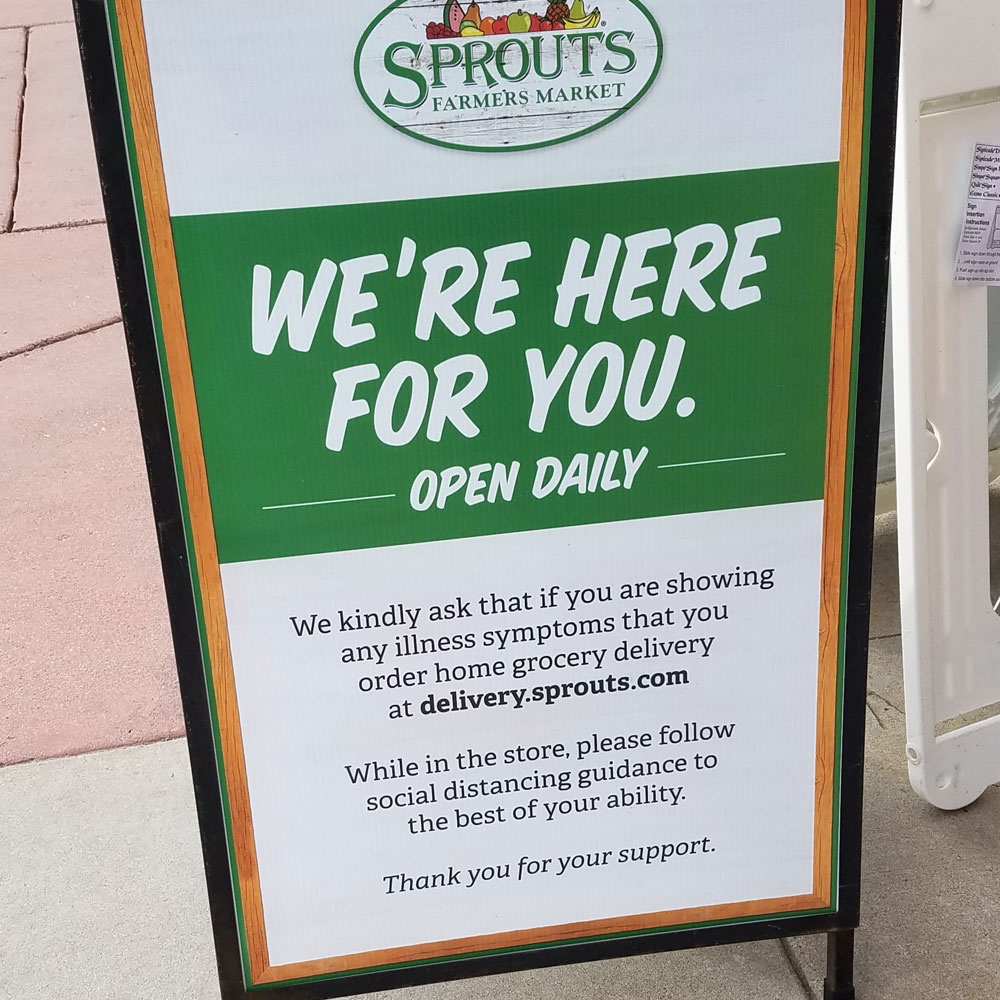
August 6, 2020, Inside Philanthropy
As restaurants closed and some farmers’ markets shut down, many expected small farms to shut down as well. However, many direct-to-market sustainable farms were able to take advantage of their size and adaptability, including by selling food at weekly markets in those states that let them operate as essential businesses.
Many funder networks and foundations have stepped up during the COVID-19 pandemic, providing emergency relief funds to small farms. How small farms have fared in the pandemic depends crucially on their business models. Small farms that relied on sales to restaurants have suffered—and many have needed emergency philanthropic aid to stay afloat. On the other hand, small farms that sold directly to consumers often founded themselves profiting, as national supply chain disruptions made “buy local” less of a slogan or preference and more of a necessity for many.
Kathleen Yetman, executive director of the nonprofit Prescott Farmers Market in Arizona, says that amid the shutdown, sales at the market climbed between 36 and 82 percent. The Prescott market offered online sales of produce, boxed for drive-thru pickup.
“It was bonkers around here,” Yetman recalls. “It was amazing. One beginning farmer went from making an average of $160 per weekly market to $940 per week selling produce boxes.”
But now that the pandemic has made visible some of the downsides of traditional corporate agriculture and the benefits of local agricultural production, will philanthropy invest in the systems necessary to make the gains of local producers lasting?
“I would like to think that sustainable agriculture would become stronger as a result of COVID-19,” says Robin Currey, a professor who directs the master’s degree program in Sustainable Food Systems at Arizona’s Prescott College.
The pandemic has certainly rung warning bells regarding some of the often-hidden costs of industrialized food processing and centralized food distribution. But what can philanthropy do about this? Currey suggests foundations could support local farmers by helping these farmers create infrastructure and marketing systems, including increasing the capacity of local producers to more easily access consumers via Twitter, Facebook, and other social media. “This would allow the general population to get more engaged with farmers who use sustainable practices,” Currey says.
Sign up for our free newsletters
Subscribe to NPQ's newsletters to have our top stories delivered directly to your inbox.
By signing up, you agree to our privacy policy and terms of use, and to receive messages from NPQ and our partners.
Programs like CSAs (community-supported agriculture) can aid in marketing and help by providing a predictable number of customers ahead of harvest by selling shares to a certain amount of produce, eggs, cheese, and so on. In Alaska, farmers and fish suppliers who depended on cruise ship sales had to switch to CSA-type boxed product and online orders in order to survive.
“It’s sort of a heyday for CSAs,” Evan Wiig of the Community Alliance with Family Farmers told NPR this May. In Minneapolis, Regenerative Agriculture Foundation (RAF) executive director Mark Muller says that even local livestock farmers have seen “an absolute explosion in demand.”
Foundations can also help farmers to improve methods and invest in sustainable farming practices in the face of climate change. That type of support can make transformations that will last.
Wiig is concerned that the attention to the pandemic means new ideas in sustainable farming will be left on the side of the road: “Before the pandemic, the country had all these forward-looking initiatives, such as climate-smart farming, to help us prepare for a climate crisis.”
RAF’s Muller led the creation of a pooled fund, Funders for Regenerative Agriculture (FORA), a five-year initiative to support pandemic-damaged farmers and ranchers. FORA is developing shorter grant application times, renewing existing grants, and encouraging private foundations to give more than the five percent required minimum payout.
It is not just the pandemic that RAF, other funders, and nonprofits are considering; both Muller and Wiig spoke of another intersecting crisis: racial justice. Wiig says, “It’s readily apparent in the food and agriculture community, which is asking itself, ‘Why are agricultural boards almost all white? Why do whites own 98 percent of our farmland, while agricultural workers are generally low-paid people of color? Why are we not addressing these historical inequities?’”
There are nonprofits working to change this. The Local Farms Fund invests in new farmers. The nonprofit Soul Fire Farm focuses on justice, ecology, and healing; their goal is to reverse the damage that industrial agriculture has done. Using regenerative farming techniques, they also work to repair the environmental impacts of pesticide exposure and toxic pollutants, which harm communities of color disproportionately.
Philanthropy has provided pandemic disaster funds, which have been critical for farms caught on the restaurant end of the supply chain when the pandemic hit. To build a healthier and more diverse local farming sector for the long term, however, will require sustained investment, animated by a vision for food systems transformation.—Marian Conway













